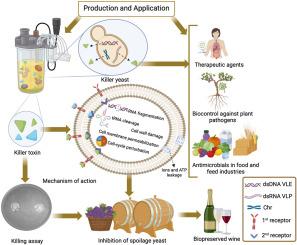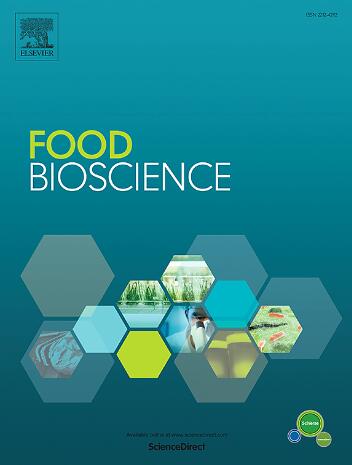酿酒中的杀手酵母:综述
IF 5.9
1区 农林科学
Q1 FOOD SCIENCE & TECHNOLOGY
引用次数: 0
摘要
杀手现象是指某些酵母产生毒素的能力,这些毒素对敏感的酵母菌株和丝状真菌是致命的。杀手毒素在其他事物中发挥抗菌活性,葡萄酒腐蚀微生物。因此,酵母杀手毒素在葡萄酒酿造中的作用受到了相当大的关注,因为它们具有控制腐败生物体和提高葡萄酒质量的潜力。杀手毒素是由某些酵母菌株产生的蛋白质化合物,特别是酿酒酵母菌和各种非酿酒酵母菌,它们对竞争的酵母菌具有抗菌特性。然而,杀伤毒素的产生是依赖于物种和菌株的。此外,这种生产受到环境因素的调节,这使得在酿酒环境中很难利用这种特性。此外,对杀手毒素的研究通常是基于琼脂测试结果或使用纯化的毒素进行的,这使得很难将这些活性推断到葡萄酒条件下。在真实生态环境下对杀手活动的研究也相对较少,有些研究是矛盾的。本文将不介绍文献中广泛描述的杀伤蛋白的作用机制[1-9]。我们建议关注酿酒条件下的杀伤毒素,以综合有关杀伤现象在葡萄酒微生物和发酵动力学中的作用的知识。同时,了解它们在发酵优化、生物保护和酵母相互作用现象中的作用。这篇综述的目的还在于强调与酿酒条件下这一现象的研究有关的矛盾及其起源和科学差距。本文章由计算机程序翻译,如有差异,请以英文原文为准。

Killer yeast in winemaking: A comprehensive review
The killer phenomenon refers to the ability of certain yeasts to produce toxins that are lethal to sensitive yeast strains and filamentous fungi. Killer toxins exert antimicrobial activity among other things, wine spoilage microorganisms. For this reason, the role of yeast killer toxins in winemaking has gained considerable attention due to their potential to control spoilage organisms and enhance the quality of wine. Killer toxins are proteinaceous compounds produced by certain yeast strains, notably Saccharomyces cerevisiae and various non-Saccharomyces yeasts, which exhibit antimicrobial properties against competing yeast species. However, the production of killer toxins is species and strain dependent. Moreover, this production is modulated by environmental factors, which makes it difficult to exploit this property in an oenological context. Furthermore, studies on killer toxins are often carried out based on agar test results or using purified toxin, which makes it difficult to extrapolate these activities to wine conditions. There are also relatively few studies on killer activity in real ecological contexts and some studies are contradictory. This review will not present the mechanisms of action of killer proteins which have been widely described in the literature [1–9]. We propose a focus on killer toxins in oenological conditions to synthesize knowledge on the role of the killer phenomenon in microbial and fermentation dynamics in wine. But also, to understand their role in the optimization of fermentations, in bioprotection, and in yeast interaction phenomena. The purpose of this review is also to highlight the contradictions and their origins and the scientific gaps relating to the study of this phenomenon in oenological conditions.
求助全文
通过发布文献求助,成功后即可免费获取论文全文。
去求助
来源期刊

Food Bioscience
Biochemistry, Genetics and Molecular Biology-Biochemistry
CiteScore
6.40
自引率
5.80%
发文量
671
审稿时长
27 days
期刊介绍:
Food Bioscience is a peer-reviewed journal that aims to provide a forum for recent developments in the field of bio-related food research. The journal focuses on both fundamental and applied research worldwide, with special attention to ethnic and cultural aspects of food bioresearch.
 求助内容:
求助内容: 应助结果提醒方式:
应助结果提醒方式:


